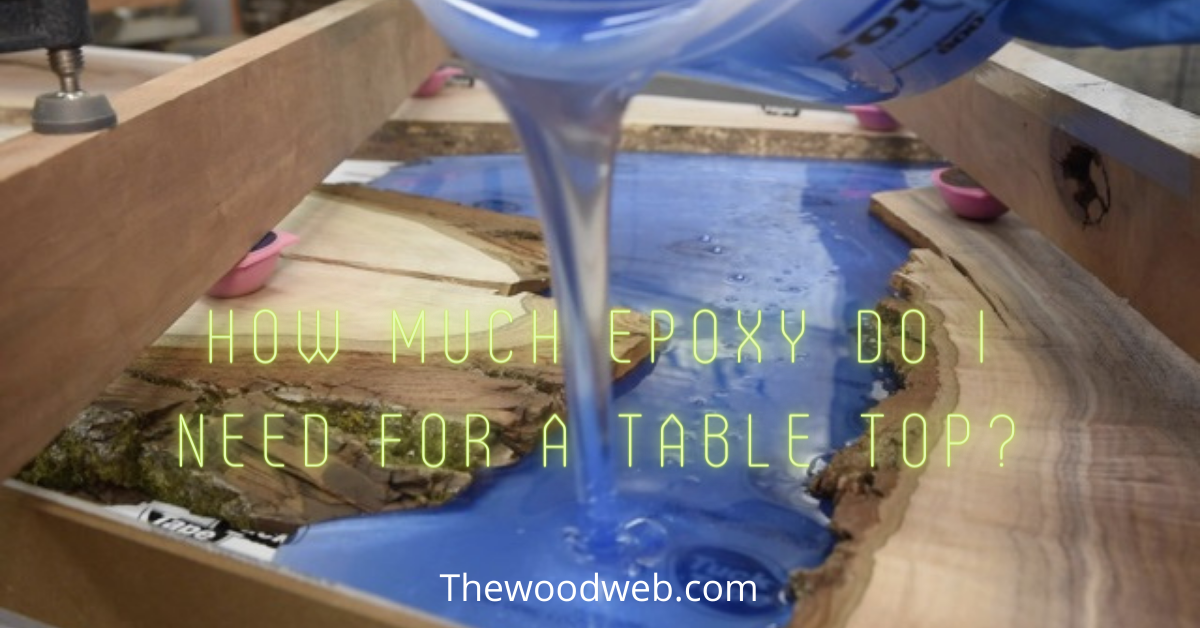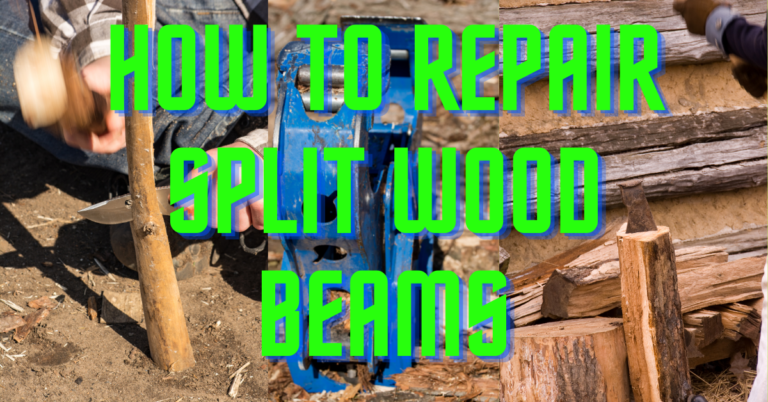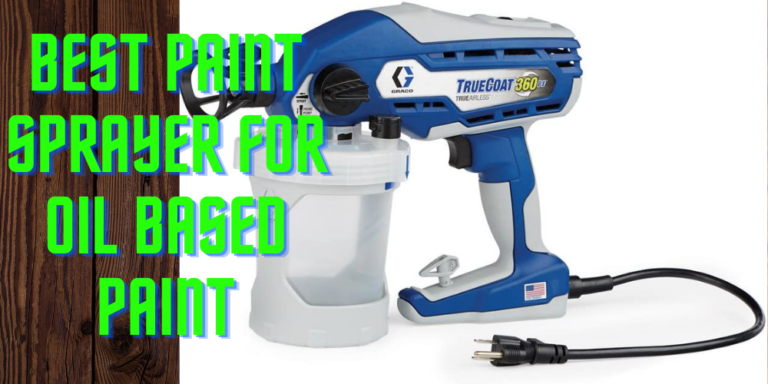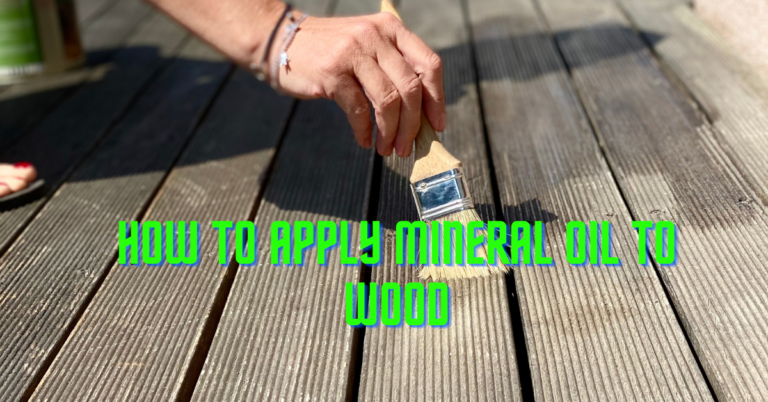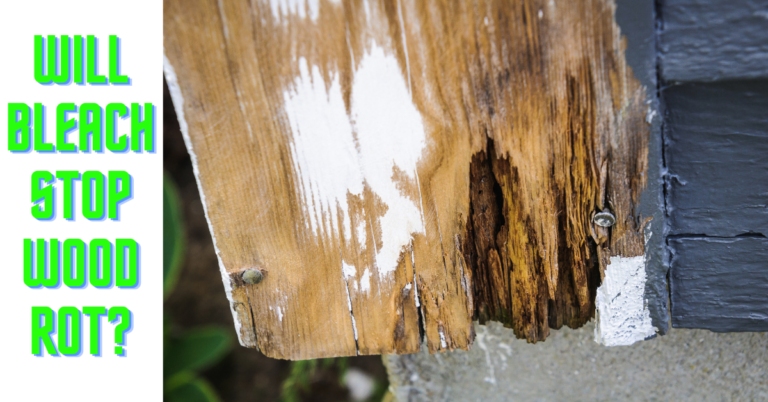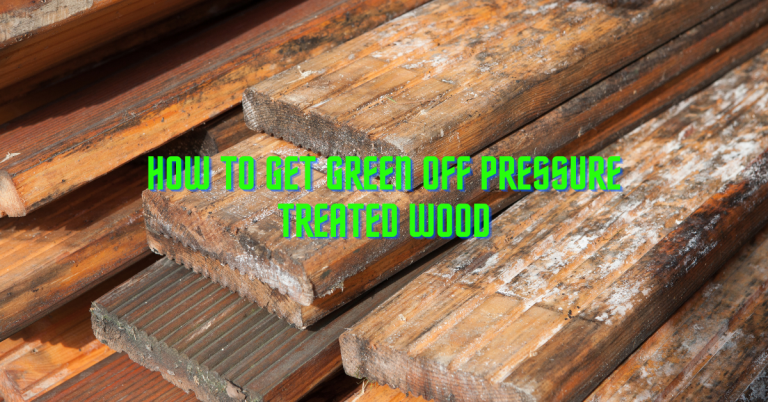How much epoxy do I need for a Table Top? Step by Step Guide DIY
To make an epoxy mixture, you’ll definitely need to know the right amount to use to avoid being short of the mix or end up having too much of it which ends up gelling. Planning to add a coat of epoxy on an object as well as getting to know the right measurement might be extremely stressful most especially for those trying epoxy cover for the first time and trying to mix and use before it cures might happen so fast than you think that ends up getting you frustrated. If you have been asking the question ” how much epoxy do I need for a table top?” and you want to know how much epoxy you want for a table-top then you’re at the right place.
Knowing how much epoxy you need depends on several factors but the most important ones will be discussed. Before calculating the amount of epoxy needed to cover a table-top or other surfaces you need to know the following:
- Length (inches)
- Width (inches)
- Coating thickness (inches)
You also need to know if you will seal the coat or not, how the edges will be treated in order to make your deduction simpler.
All at a Glance
How much epoxy do I need for a Table Top?
To cover a table-top, a mixed gallon of epoxy (half a gallon each of resin and hardner) will cover approximately 12 square feet. When dealing with a rectangular surface, you can simply calculate to know the exact amount you need. Simply follow those steps outlined below
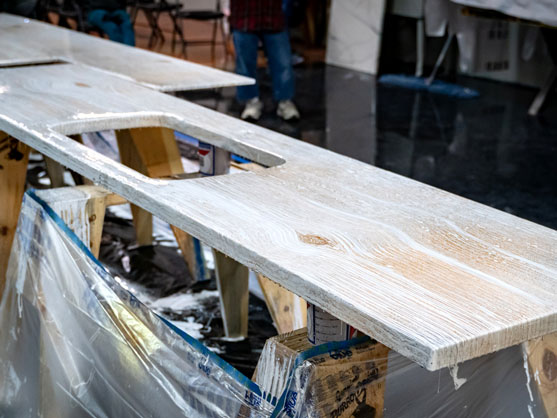
- Measure the material to be coated.
- Determine how thick you want your epoxy to be.
- Multiply the three measurements (length×width×coating thickness), make sure you enter the value for your thickness as a decimal value
- Multiply the values together
- The result is the volume for the tip of the table, bar or counter in cubic inches It’s easier when working with a round object. You only need to do the following:
- Measure the diameter
- Divide the diameter by 2 to get the radius
- To get the volume in cubic inches simply multiply the (squared radius(r^2) × pi = 3.14152× desired epoxy thickness)
- Divide the value gotten by 1.805 to convert it from cubic inch volume to US fluid ounces.
- To convert ounces to gallons you can simply divide by 128.
If you know the area for a given surface already simply follow the few steps on how to calculate the volume needed safely.
- Multiply the area known by the desired coating thickness
- Convert the feet to inches and the fractions to decimals to get the accurate volume.
- Convert the cubic inch volume to ounces
- Convert ounces to gallons by simply dividing by 128. For example, a rectangular table has a length and width of 30 × 45 respectively and I want a thickness of 1/8 inch.
To get the volume:
Length× weight × thickness (in decimal)
30 × 45 × 0.125 = 168.75
Convert from cubic inch volume to ounces
Volume/ 1.805
168.75/1.805 = 93.4903 ounces
Convert ounces to gallons
Ounces/ 128
94.4903/ 128 = 0.7303 gallons
To convert the inches to decimals might be difficult but the conversions are listed as follows for easy calculations.
1/8” = 0.125
1/4” = 0.25
3/8” = 0.375
1/2” = 0.50
5/8” = 0.625
3/4” = 0.75
7/8” = 0.875
1” = 1.00
After calculating the amount of epoxy needed, you’ll need more if you’re going to allow the epoxy to run over the edges similar to building a wall, which means you will most likely lose a bit of the epoxy mixture to mixing or overflow. To be always on a safer side, always add 5 — 10% extra to make up for the ones that’ll be wasted, like the one that stays on the stir stick, bottom corners of the mixing cup or few accidental drips.
How many square feet does 1 gallon of Epoxy Cover?
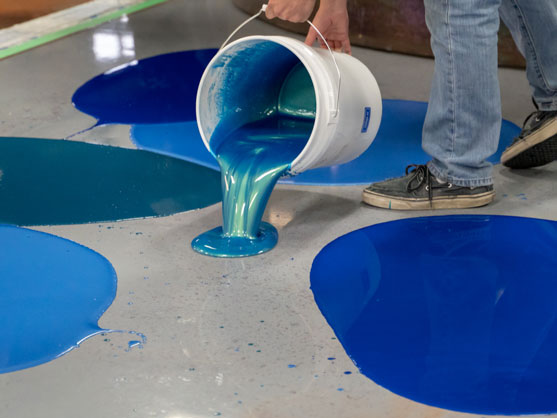
Most coating epoxies cover approximately 12 square feet per mixed gallon at 1/8 inch thickness. A whole gallon of epoxy contains half a gallon each of resin and hardener. Although this may vary by brand, so always make sure you check the manufacturer’s instructions to be sure.
Also, make sure you always have more epoxy at hand than you feel you need. It is better to have more than running out of it which might eventually make you resand the entire surface and pour it all over again. If you run out of epoxy in the middle of a table, you cannot just apply epoxy to the table when you want.
It will always leave a visible line where the first pour meets the second which will cost you more money and time to erase the error. That is why it’s always safer to have more at hand.
Read Also: How much epoxy resin do I need for a river table?
Three important factors will be considered which are:
- Seal coating
- Damming or self-leveling
- Thickness
Seal coat
A lot of times people get confused as to if a seal coat is needed. A seal coat should only be needed for wood or other porous materials. This prevents air bubbles from coming out of the substrate while the flood coat is applied later. While working on a porous surface you’ll definitely use a seal coat.
A seal coat is a thin layer of epoxy that you can apply with a brush on wood or other porous surfaces, the seal coat applied prevents air bubbles from forming on the formal epoxy layer. It is a thin layer that even if air bubbles out of the wood it won’t get trapped by the epoxy. You can simply brush over the spot again after the air escapes. Then immediately the seal layers has cured, you can apply the final, thicker layer of epoxy without worrying about air bubbles.
When using a seal coat you’ll need more than the initial budgeted mix that is why it’s always safer to mix more than you need. Also, be careful you don’t mix the epoxy for both the seal and final coat at the same time. You won’t apply the final coat until the seal coat has cured. If you mix all the epoxy at once it will cure in the bucket while you’re waiting for the seal coat to cure.
Damming or leveling
While preparing your epoxy mix you need to know if you’re damming the edges of the surface or letting the epoxy flow over. It’s either you control the thickness of the coat or let the epoxy settle over the surface normally. Damming the edge of the surface gives you complete control over the thickness of the final layer, but you might find it difficult to remove the material you used to dam the edges.
If you’re using a self-leveling method, it will self-level at a thickness of about 1/8 of an inch. Most epoxy sold for home use is self-leveling and this has the potential to create a big mess and to avoid this you’ll want to cover everything that isn’t coated in epoxy with plastic sheets. The amount of epoxy you need will depend on whether you’re letting itself level it damming it in.
For two equally sized surfaces, you would need less epoxy to achieve a coat of the same thickness if you use a dam, but you’ll need more if you let it flow over the edges.
Thickness
How thick do you want your coat to be?
Most epoxies are designed to self-level to create a coat that is 1/8 of an inch thick. Is it thick enough for you? If you want to create a thicker coat of epoxy, you’re going to need more. If you want a thinner coat, you’ll need less but should probably not try that. Epoxies want to settle out to a coat 1/8 inch thick, it is easy to add more to that but it’s very difficult to make it thinner while keeping it level.
Making the coat thicker also requires the use of a dam or mold which holds everything in.
This means you may not need as much extra epoxy as you might think to create a thicker layer, since you safe yourself having the epoxy running off from the edges. Be careful not to use casting resin instead of epoxy. Casting resin is thinner than coating epoxy which means it spreads more and you could use a smaller amount of it to cover the same surface area.
However, casting resin does not make good coats, they’re meant for use in encasing things for display not forming a protective coating on a broad surface. Hence, they do not provide the same level of durability and protection as a coating epoxy will.
Guiding tips
- Most coating epoxies cover approximately 12 square feet per mixed gallon (half a gallon of hardener + half a gallon of resin)
- When seal coating, do not mix the epoxy for seal and final coat at the same time.
- When self-leveling, cover all other areas not coated with epoxy with plastic sheets.
- Always have more epoxy on hand than you need.
- To get the measurement, get the length and width of the surface to be coated.
Conclusion – How much epoxy do I need for a Table Top?
The exact measurement of epoxy you need depends on the shape of the object you want to coat, as well as the thickness and other methods you want to use but a gallon of epoxy will cover 12 square feet which is a good start off, make sure you read the manufacturers instruction and mix more than you need.
Important Reads:

